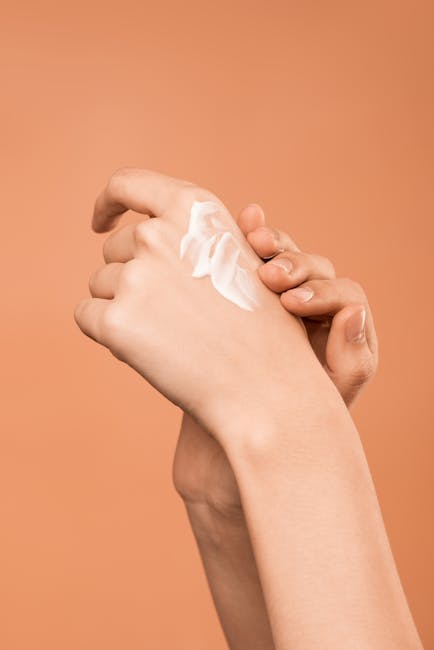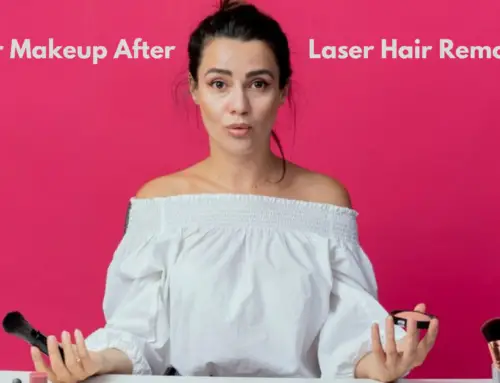Hey there! Have you ever wondered why your moisturizer starts to pill on your skin? Well, let’s dive right into it and find out why is my moisturizer pilling.
When it comes to skincare, we all want that smooth and flawless complexion, right? But sometimes, instead of getting that silky finish, we end up with annoying little balls of product on our face. Ew!
So, why does this happen? The answer lies in the combination of certain products and ingredients that just don’t play well together. Let’s explore why your moisturizer might be pilling and how you can prevent it.
Ready to solve this skincare mystery? Let’s get started!
Why Is My Moisturizer Pilling? Understanding the Causes and Solutions
It’s frustrating when you apply your daily moisturizer, only to see it start balling up or rolling off your skin. This phenomenon, known as “moisturizer pilling,” can be a nuisance and make it difficult to achieve smooth and even skin texture. In this article, we will explore the reasons behind why your moisturizer might be pilling and provide you with effective solutions to prevent this issue.
The Role of Ingredients in Moisturizer Pilling
When it comes to moisturizer pilling, the culprits are often the ingredients present in the product. Silicones, such as dimethicone or cyclomethicone, are commonly used in moisturizers to create a smooth and silky texture. While they provide hydration and form a protective barrier on the skin, they can also contribute to pilling. This is because silicones can repel other ingredients, causing them to clump together and roll off the skin.
In addition to silicones, emollients and occlusives, such as petrolatum or mineral oil, can also lead to pilling. These ingredients, which help lock in moisture, might not absorb fully into the skin and can create a slippery surface that causes the moisturizer to rub off in small particles.
To prevent moisturizer pilling caused by ingredients, look for products with lighter textures that are less likely to clump or contain alternative formulations without silicones. Opting for oil-free or water-based moisturizers can also reduce the likelihood of pilling. Remember to check the ingredient list before purchasing a moisturizer to ensure it doesn’t contain any potential pilling culprits.
How Skincare Routine Affects Moisturizer Pilling
Your skincare routine plays a significant role in the occurrence of moisturizer pilling. Using multiple products with different formulations or not allowing each product enough time to absorb can lead to pilling. When products with incompatible textures or ingredients interact, they can disrupt the stability of your moisturizer, causing it to clump and roll.
One common mistake is applying a silicone-based primer or foundation on top of a silicone-based moisturizer. The two silicone-based products can create a slip and slide effect, leading to pilling. Mixing water-based and oil-based products can also result in pilling, as they have different consistency and absorption rates.
To avoid moisturizer pilling caused by your skincare routine, give each product enough time to absorb fully before applying the next one. Allow at least a minute or two for your moisturizer to sink in before moving on to makeup or other skincare steps. If using multiple products, try to stick to products with similar formulations or textures to ensure compatibility and minimize the risk of pilling.

Environmental Factors and Other Causes of Moisturizer Pilling
While ingredients and skincare routines are common causes of moisturizer pilling, there are other factors to consider. Environmental conditions, such as humidity or excessive sweating, can contribute to pilling. Moisturizers might not adhere properly to the skin’s surface when it is excessively moist or sweaty, resulting in pilling.
Another factor to be mindful of is the application technique. Rubbing or massaging the moisturizer too vigorously into the skin can cause it to ball up or roll off. Instead, gently pat or press the moisturizer into the skin to ensure even distribution and absorption.
Additionally, the quality and age of the moisturizer can impact its performance. Expired or low-quality moisturizers may be more prone to pilling due to changes in their formulation or degradation of their ingredients. It’s important to check the expiration dates and choose high-quality products to minimize the risk of pilling.
7 reasons your skin care is pilling| Dr Dray
Preventing and Managing Moisturizer Pilling: Tips and Tricks
1. Choose the Right Moisturizer
Opt for lightweight, non-comedogenic moisturizers that are free from silicones and heavy occlusives. Look for oil-free or water-based options that are less likely to pill and are suitable for your skin type.
2. Check the Ingredients
Before purchasing a moisturizer, carefully read the ingredient list to ensure it doesn’t include any known pilling triggers, such as silicones or heavy occlusives. Consider patch-testing new products to see how your skin reacts to them.
3. Apply in Thin Layers
Instead of applying a thick layer of moisturizer all at once, opt for thin, even layers and allow each layer to absorb fully before adding more. This will help prevent the accumulation of product and reduce the likelihood of pilling.
4. Give Products Time to Absorb
Allow each skincare product to absorb fully into the skin before moving on to the next step. This will ensure compatibility between the different products and minimize the risk of pilling.
5. Adjust Your Application Technique
Instead of rubbing or massaging the moisturizer into the skin, try gently patting or pressing it in. This will help the product adhere better and absorb properly, reducing the chances of pilling.
6. Consider Layering Order
If you use multiple skincare products, pay attention to the order in which you apply them. Start with the lightest consistency, such as toners or serums, and finish with the moisturizer. This allows for better absorption and compatibility between the products.
7. Be Mindful of Environmental Factors
Avoid applying moisturizer on excessively sweaty or moist skin, as this can interfere with the product’s adherence. Consider adjusting your skincare routine based on weather conditions, such as using lighter formulations in humid environments.
By following these tips and understanding the various causes of moisturizer pilling, you can ensure a smooth and effective skincare routine. Remember to be patient and experiment with different products and techniques to find the best solution for your skin.
Key Takeaways: Why is My Moisturizer Pilling?
- Pilling happens when your moisturizer forms small balls or flakes on your skin.
- It can occur due to incompatible product combinations, such as using silicone-based primer and water-based moisturizer.
- Pilling may also be caused by applying too much product or not allowing enough time for each layer to absorb.
- In some cases, it could be due to the buildup of dead skin cells or excessive oil on the skin’s surface.
- To avoid pilling, make sure to use compatible skincare products, apply thin layers, and give each layer enough time to absorb before moving on.
Frequently Asked Questions
Curious about why your moisturizer is pilling? We’ve got answers! Read on to find out why this frustrating phenomenon occurs and what you can do about it.
1. Why is my moisturizer pill on my skin?
Pilling occurs when the moisturizer does not fully absorb into the skin and instead forms small balls or flakes. Several factors can contribute to this issue. One common culprit is the formulation of your moisturizer. If it contains certain ingredients like silicones, heavy oils, or high levels of emollients, it may be more prone to pilling. Additionally, applying too much moisturizer or layering it on top of other products can also cause pilling.
To minimize pilling, opt for moisturizers with lighter formulas that are easily absorbed. Look for oil-free or gel-based moisturizers. It’s also important to use the right amount of product – don’t slather on too much! Applying thin layers and allowing each layer to fully absorb before adding more can help prevent pilling.
2. Can my skincare routine cause my moisturizer to pill?
Yes, your skincare routine can play a role in moisturizer pilling. If you’re using certain products that don’t play well together, they can create a recipe for pilling. For example, if you’re combining a moisturizer with a heavy oil-based serum, the different textures may not blend seamlessly and can lead to pilling.
To avoid this issue, it’s important to consider the compatibility of your skincare products. Stick to products with similar textures and formulations when layering. If you’re unsure about the compatibility of specific products, it can be helpful to do a patch test on a small area of your skin before applying them to your entire face.
3. Is there a specific technique I should use to apply my moisturizer?
Applying your moisturizer in the right way can make a difference in minimizing pilling. Start by cleansing your face and patting it dry. Then, take a small amount of moisturizer and dot it evenly across your face. Use your fingertips to gently massage the product into your skin using upward motions.
Avoid rubbing the moisturizer vigorously as this can cause friction and potential pilling. Allow the moisturizer to fully absorb into your skin before moving on to other skincare or makeup products. Taking these steps can help ensure that your moisturizer is properly absorbed, reducing the chances of pilling.
4. Can the type of makeup I wear affect moisturizer pilling?
Yes, the type of makeup you wear can contribute to moisturizer pilling. Certain foundations, primers, or powders can mix with your moisturizer and cause it to ball up. Additionally, applying makeup with a heavy hand or layering too many products can increase the likelihood of pilling.
To minimize pilling, choose makeup products that have a lightweight and compatible texture with your moisturizer. Opt for water-based or oil-free foundations and avoid applying excessive layers. Applying a thin layer of primer before your makeup can also create a smoother surface for application and reduce the chances of pilling.
5. How can I prevent moisturizer from pilling throughout the day?
If you notice your moisturizer pilling during the day, there are a few things you can do to prevent it. Firstly, avoid touching your face excessively as this can disrupt the moisturizer and cause it to ball up. Secondly, try to avoid applying additional products on top of your moisturizer, especially heavy creams or oils, as they can contribute to pilling.
If you need to apply makeup or other products, wait for your moisturizer to fully absorb into your skin before layering. Blotting excess oils from your face throughout the day can also help minimize pilling. Lastly, consider reapplying a lightweight moisturizer or using a facial mist to refresh and hydrate your skin without disturbing the existing product layers.

Summary
So, to sum it up, moisturizer pilling happens when you apply too much product or use incompatible formulas. It’s those tiny balls that form on your skin and can make your moisturizer feel gross and ineffective. To prevent pilling, use a small amount of moisturizer and let it fully absorb before applying other products. Also, make sure to check if your skincare products are compatible and if they play well together. Remember, less is more when it comes to moisturizer, and finding the right combination of products can make all the difference in maintaining smooth and hydrated skin.






Leave A Comment